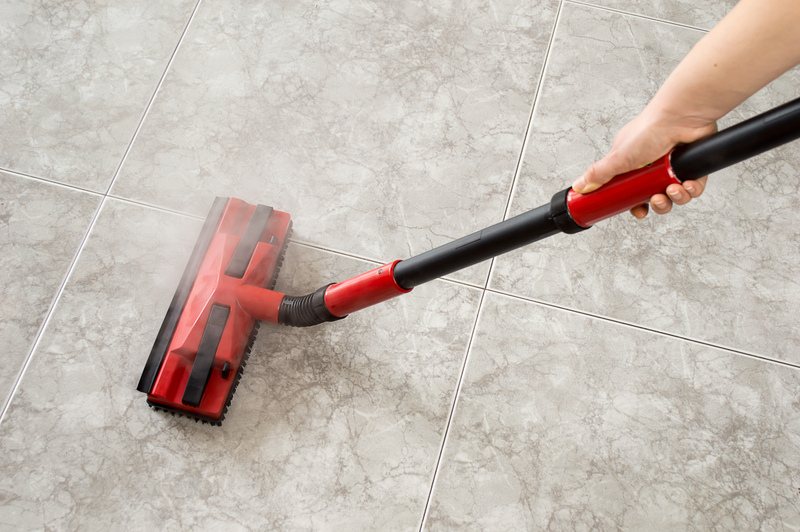Transform Your Window Sills: Removing Mould Efficiently
Posted on 03/07/2025
Transform Your Window Sills: Removing Mould Efficiently
Mould on window sills is more than just an unsightly problem--it can impact your indoor air quality, damage your property, and cause health concerns. Overlooking mould removal can lead to more extensive and expensive repairs, not to mention the constant irritation of recurring black splotches. If you're troubled by this stubborn issue, you've landed in the right place. This comprehensive guide will walk you through how to clean mould from window sills efficiently, discuss what causes mould growth, preventive steps, and safe, eco-friendly cleaning techniques. Learn how to transform your window sills from grimy and unhealthy to pristine and fresh. Let's dive in!
Understanding Why Mould Develops on Window Sills
Before tackling mould removal from window sills, it's essential to know why mould acts as an uninvited guest in our homes. Mould spores are everywhere--indoors and outside. Under the right conditions, these spores can settle and thrive, particularly on surfaces with sustained moisture, such as window sills.
Main Causes of Mould on Window Sills
- Condensation - Windows are highly susceptible to condensation, especially during colder months. When warm air inside meets the cold windowpane, moisture forms and settles on the sill.
- Poor Ventilation - Inadequate air circulation causes humidity and moisture to remain trapped, encouraging mould growth.
- Leaky Windows - Faulty window seals or cracks around frames allow water to seep in.
- Neglected Cleaning - Dust, dirt, and organic material build up on sills, providing nutrients for mould.
Recognizing these causes helps homeowners identify and control risk factors, paving the way for an effective and lasting mould cleaning routine.

Signs You Have Mould On Your Window Sills
Mould is not always visually obvious, especially in its early stages. Here's what to look out for:
- Black, green, or grey spots on the window sills or frames.
- Musty, damp odour in the room.
- Peeling paint or bubbling surfaces near the windows.
- Moisture or water stains accompanying discolouration.
If you notice any of these indicators, it's time for some mould cleaning action.
How to Remove Mould from Window Sills Efficiently
Tackling mould on your window sills doesn't have to be daunting. Follow this reliable step-by-step guide for mould removal. It's critical first to ensure your safety since mould spores can cause irritation or allergic reactions.
Preparation: Gather Your Supplies
- Protective gear: gloves, goggles, and a face mask
- Soft-bristled brush or old toothbrush
- Disposable cloths or sponges
- Spray bottle
- Cleaning solution: You may opt for a commercial mould remover or make your own using household supplies (more on this below)
- Paper towels or old rags
- A vacuum cleaner (HEPA-filter preferred)
Step 1: Ensure Safety & Ventilation
- Open windows (if weather allows) to promote fresh air circulation and reduce spore concentration indoors.
- Put on your protective gear--never skip this, as disturbances can release mould spores into the air.
Step 2: Dry the Area
- Before starting the cleaning process, ensure the window sill is as dry as possible.
- Use paper towels to absorb visible moisture.
Step 3: Remove Loose Mould Growth
- Using a HEPA vacuum, carefully remove any loose mould spores and dust from the window sill and frame.
- Dispose of the vacuum bag promptly outside your home to avoid contaminating the air.
Step 4: Apply the Mould Cleaning Solution
You can choose between a store-bought mould killer or make your own safe, eco-friendly version:
- White vinegar solution: Mix equal parts distilled white vinegar and water in a spray bottle.
- Baking soda solution: Dissolve two tablespoons of baking soda in two cups of water.
- Hydrogen peroxide (3%): Use undiluted for tough stains.
Spray the affected areas generously and let the solution sit for at least 10-15 minutes. This soaking time helps to kill the mould at its roots and loosens stains.
Step 5: Scrub and Wipe Clean
- Using your soft brush or toothbrush, gently scrub the window sill, paying attention to corners and cracks.
- As the solution lifts the mould, wipe away the residue with a disposable cloth or sponge.
- Repeat spraying and scrubbing if stubborn patches remain.
Step 6: Rinse and Dry
- Wipe the cleaned area with a damp cloth to remove any cleaning solution residue.
- Dry the window sill thoroughly with a clean, dry towel to prevent future mould growth.
Step 7: Dispose of Cleaning Materials Properly
- All used cloths, masks, gloves, and vacuum bags should be sealed in a bag and thrown away promptly.
- Wash hands and any exposed skin thoroughly after cleaning.
Eco-Friendly and Non-Toxic Mould Removal Solutions
For those who prefer green cleaning solutions, removing mould from window sills doesn't have to involve harsh chemicals. Here are safe alternatives that are as efficient as commercial cleaners:
- White Vinegar: A natural antifungal, vinegar kills up to 82% of mould species. Apply undiluted for severe cases.
- Baking Soda: Not only does it remove mildew stains, but it also deodorizes the area.
- Tea Tree Oil: Offer potent antifungal properties; mix 1 teaspoon with 1 cup of water and spray on the mouldy area.
- Lemon Juice: Its high acidity breaks down mould and leaves a fresh scent.
*Tip: Never mix bleach and vinegar or other household chemicals--this can produce dangerous fumes!
How to Prevent Mould from Returning on Window Sills
After your window sill mould removal efforts, keeping surfaces dry and free from excess moisture is crucial to preventing recurrence. Implement these tips:
- Wipe down window sills regularly, especially after condensation or rainy weather.
- Improve ventilation: Use extractor fans in kitchens and bathrooms, open windows when possible, or invest in a dehumidifier in damp-prone rooms.
- Seal leaks promptly: Inspect window frames for cracks or failed seals and repair as needed.
- Use moisture absorbers: Place silica gel packs or moisture-absorbing crystals on window sills.
- Regular inspections: Check your window sills every couple of weeks for early signs of mould so you can act fast.
Consistency with these preventive practices is key to a healthy, mould-free window sill.
Frequently Asked Questions About Window Sill Mould Removal
Is mould on window sills dangerous?
Yes, especially for sensitive individuals. Mould exposure can trigger allergies, asthma, and other respiratory problems. Children, elderly individuals, and those with weakened immune systems are most at risk.
What kills mould permanently?
*Thorough cleaning combined with moisture control is critical.* While commercial mould removers may kill surface mould, only eliminating the underlying moisture source will prevent recurrence. Home solutions like vinegar and baking soda are effective, but recurring mould needs constant attention to environmental factors.
Can I paint over mouldy window sills?
No! Painting over mould just covers the problem without resolving the root cause. Mould will eventually resurface and may damage your paintwork further. Always clean and treat the sill thoroughly first.
Should I replace a mouldy window sill?
In severe cases where the wood or material is rotten or soft to the touch, full replacement may be necessary. For minor or superficial glazing, deep cleaning and moisture control usually suffice.
Can I use bleach to remove window sill mould?
Yes, but with caution. Bleach is effective on non-porous surfaces but is not recommended for wood or painted sills, as it can cause discoloration and is harsh for indoor air. Non-toxic alternatives are safer and equally efficient for most household cases.

When to Call a Professional for Window Sill Mould Remediation
For most household scenarios, using the methods outlined above will efficiently remove mould from your window sills. However, in certain circumstances, professional help is advisable:
- The mould covers an area larger than 1 square metre (about 10 square feet)
- The mould keeps returning rapidly despite your cleaning efforts
- There is a strong, pervasive musty smell
- The window sills and frames are severely damaged or structurally compromised
- Anyone in the home has persistent health symptoms suspected to be mould-related
Certified mould remediation specialists have the equipment and experience to safely contain, remove, and remediate large mould infestations, protecting your health and property.
Final Thoughts: Enjoy Mould-Free, Beautiful Window Sills
With the right information, determination, and tools, you can transform your window sills and keep them mould-free for years to come. Regular attention to moisture control, diligent cleaning, and prompt repairs are the pillars of a healthy environment. Remember: clean sills aren't just for appearance--they contribute to overall well-being and property value.
If you found this guide on efficiently removing mould from window sills helpful, share it with friends and family. A little knowledge goes a long way in preventing minor issues from becoming major headaches.
- Stay vigilant.
- Keep your window sills dry and clean.
- Act quickly if you spot signs of mould.
Transforming your window sills by efficiently removing mould is easier than you think! Start today, and say goodbye to unhealthy, unattractive window frames forever.




 Sofa Cleaning
Sofa Cleaning
 Curtain Cleaning
Curtain Cleaning
 Office Cleaning
Office Cleaning